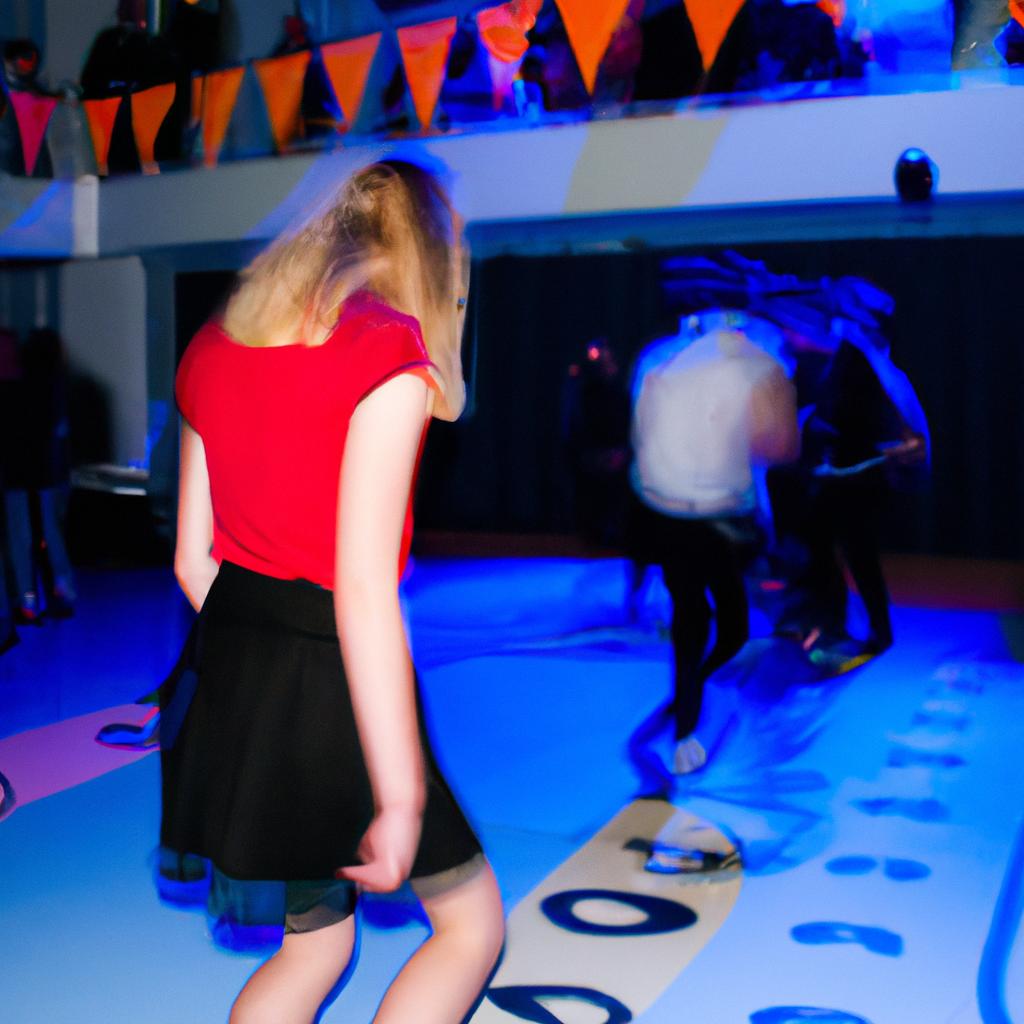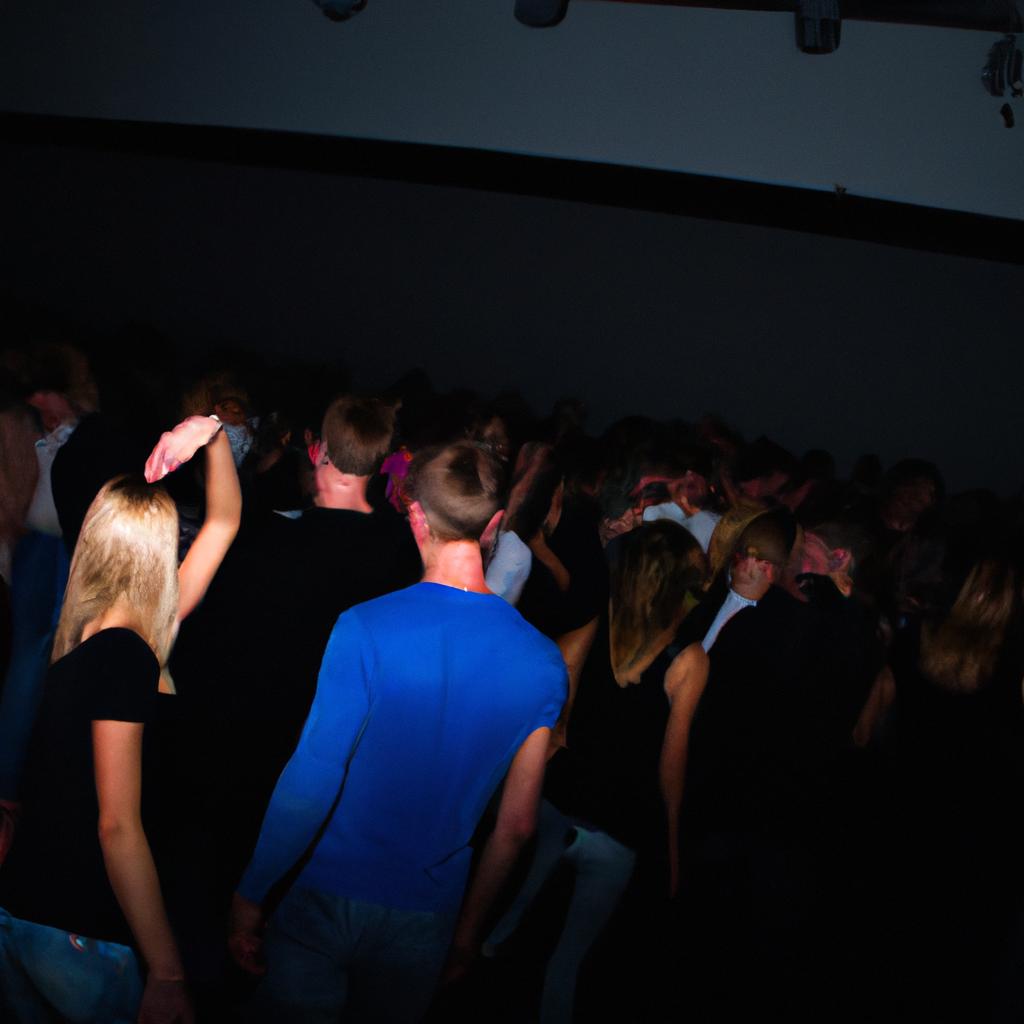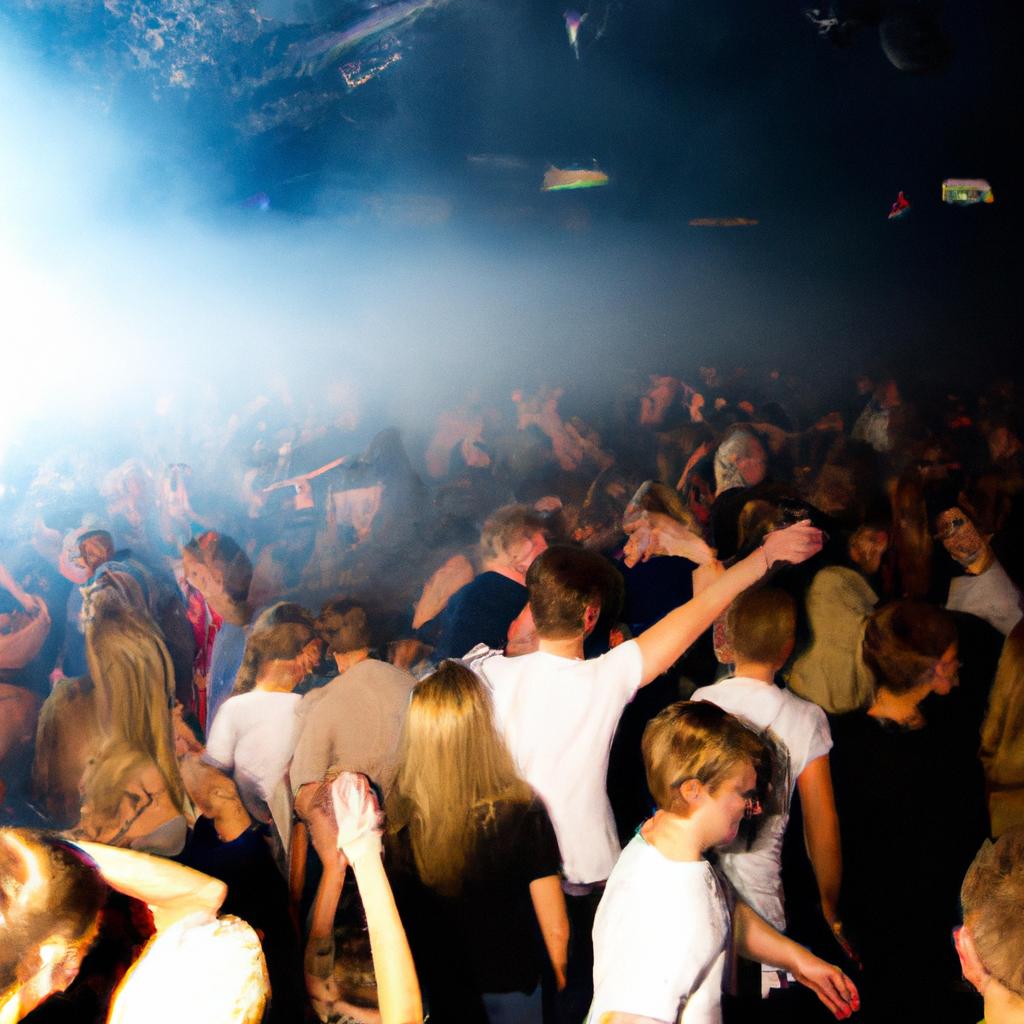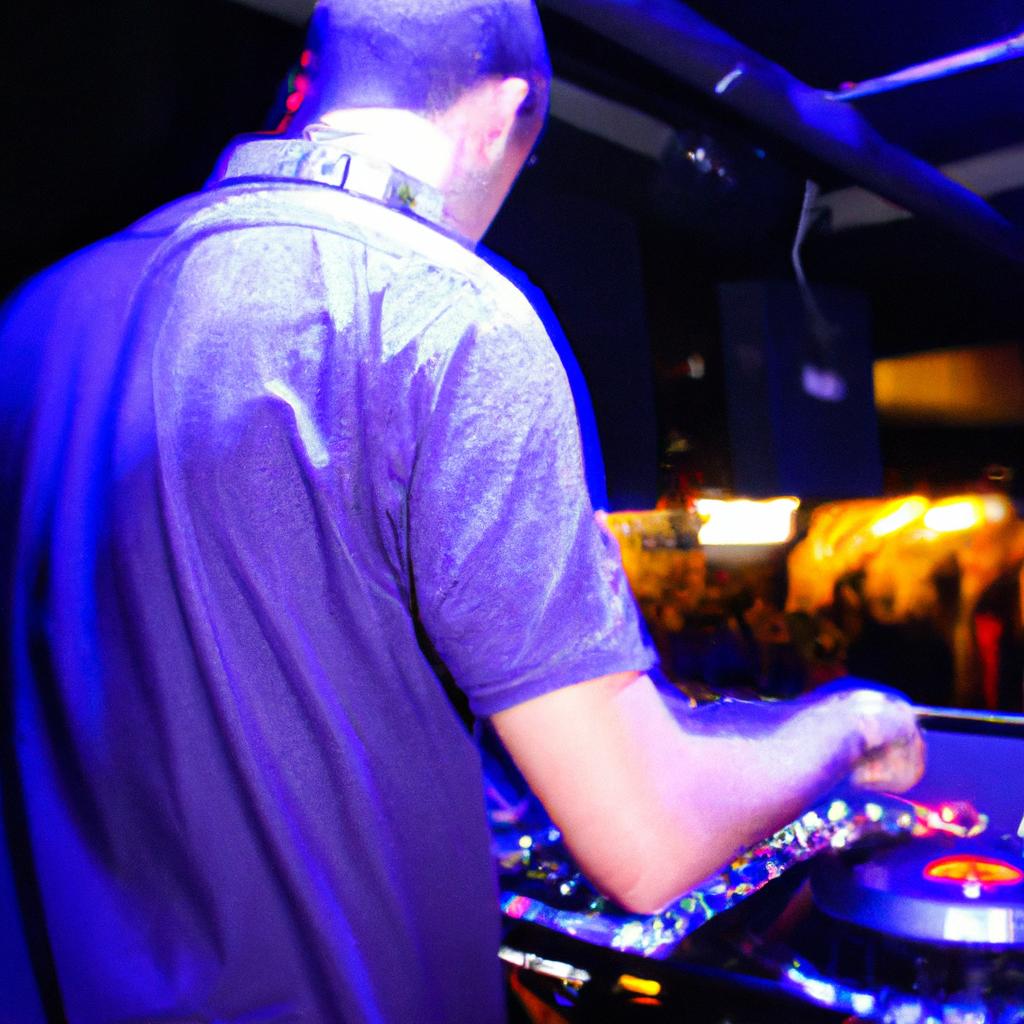Salsa Nights: Dance & Nightlife Events
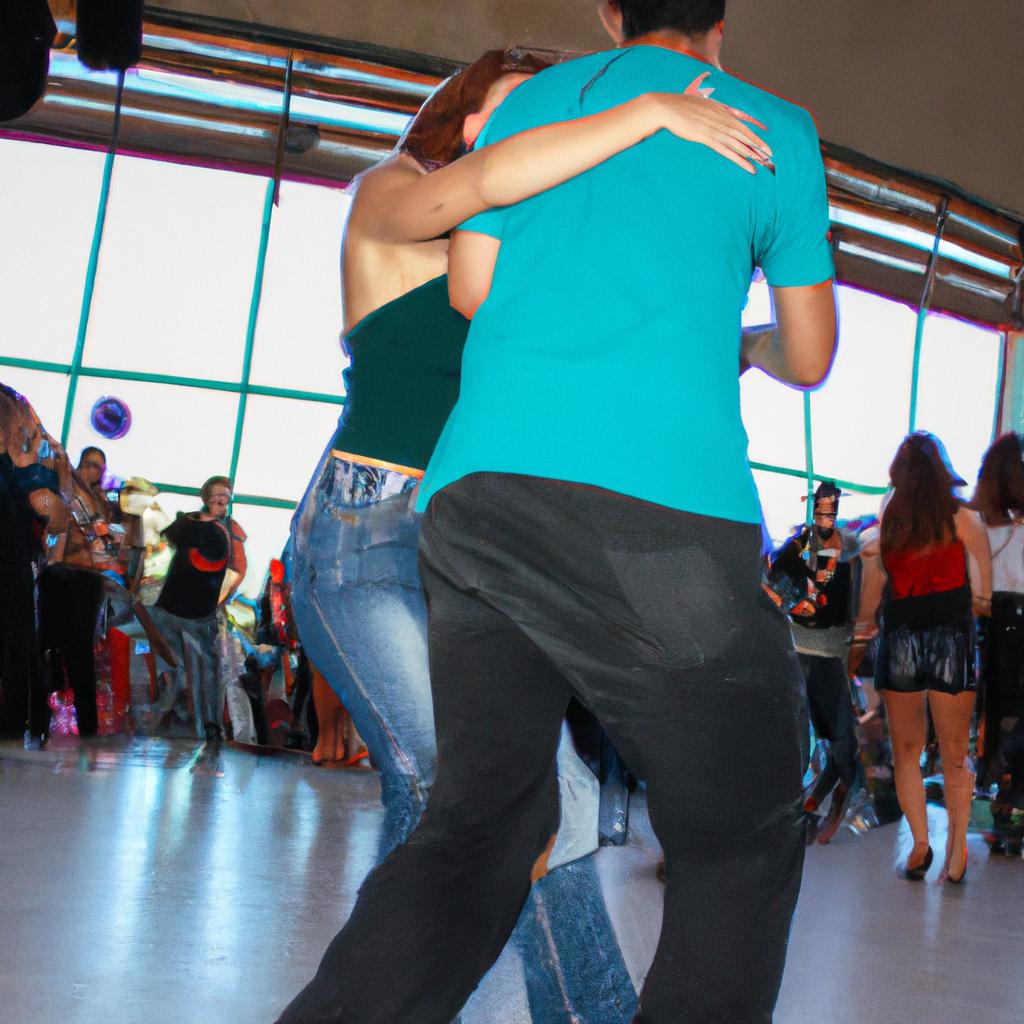
Salsa Nights: Dance & Nightlife Events have gained significant popularity in recent years, attracting dance enthusiasts and individuals seeking an exhilarating social experience. These events offer a vibrant atmosphere where participants can immerse themselves in the energetic rhythms of salsa music and engage in passionate dance moves. For instance, imagine a bustling nightclub adorned with colorful lights and pulsating with contagious energy. In this hypothetical scenario, individuals from diverse backgrounds gather to partake in Salsa Nights – a phenomenon that has captured the attention of many around the world.
Amidst the growing interest in salsa dancing, Salsa Nights provide a platform for people to showcase their skills while fostering connections within a lively community. Through these events, dancers not only enhance their technical abilities but also develop confidence on the dance floor. The engaging nature of salsa allows participants to embrace self-expression through movements that convey emotions and tell stories without relying on verbal communication. Moreover, as attendees join together in this shared passion for salsa, they create an inclusive environment that promotes cultural appreciation and diversity. Thus, exploring the concept of Salsa Nights unveils its significance beyond mere entertainment – it serves as a medium for personal growth, cultural exchange, and building strong social bonds among individuals who share a love for Latin American music and dance and dance.
Salsa Nights provide a unique opportunity for individuals to immerse themselves in the rich and vibrant culture of Latin America. The music, dance, and overall atmosphere transport participants to a different world where they can experience the joy and passion that salsa embodies. By embracing this cultural art form, attendees gain a deeper understanding and appreciation for the traditions and history behind it.
Furthermore, Salsa Nights foster a sense of community among dancers and enthusiasts alike. People from all walks of life come together on the dance floor, breaking barriers and connecting through their shared love for salsa. It is not uncommon to witness strangers becoming friends as they bond over their mutual interest in this exhilarating dance style. This sense of camaraderie creates an inclusive environment where everyone feels welcome and encouraged to express themselves freely.
In addition to personal growth and building social connections, Salsa Nights also offer numerous health benefits. Salsa dancing is a fantastic workout that combines cardiovascular exercise with strength training. As participants move to the infectious rhythms, they engage multiple muscle groups, improve balance and coordination, and burn calories—all while having fun! Regular participation in salsa events can contribute to improved physical fitness levels and overall well-being.
To summarize, Salsa Nights have gained popularity due to their ability to provide an exciting social experience while fostering personal growth, cultural exchange, and strong social bonds. These events allow individuals to showcase their skills, express themselves artistically, and connect with others who share their passion for Latin American music and dance. Whether you are an experienced dancer or someone looking for a night filled with energy and excitement, Salsa Nights offer something truly special for everyone involved.
Salsa dance: A captivating and energetic Latin dance form
Imagine yourself in a dimly lit room, surrounded by the rhythmic beats of Latin music. Couples gracefully glide across the dance floor, their bodies moving in perfect harmony with one another. This is the world of salsa dance – an exhilarating and vibrant art form that originated in the Caribbean during the late 19th century.
Salsa dance is characterized by its lively tempo, intricate footwork, and sensual partnering techniques. It gained popularity worldwide due to its infectious energy and ability to captivate audiences of all backgrounds. For instance, let’s consider Maria, a young woman who had always been intrigued by Latin culture but was hesitant to step onto the dance floor. After attending her first salsa class, she found herself immersed in its passionate embrace and quickly fell in love with this expressive dance style.
To fully grasp the essence of salsa dance, it is important to understand its key elements:
- Rhythm: Salsa music typically follows a syncopated rhythm pattern, creating an irresistible urge to move your body.
- Partnering: Salsa is predominantly danced as a couple; partners engage in fluid movements while maintaining connection through handholds or open embraces.
- Footwork: Intricate steps involving fast-paced shuffling and quick weight transfers are fundamental components of salsa choreography.
- Improvisation: Unlike other structured dances, salsa allows for improvisation within certain patterns, enabling dancers to showcase their creativity and personal style.
To better visualize these elements, take a look at the following table showcasing some common steps used in salsa dancing:
| Step Name | Description | Level of Difficulty |
|---|---|---|
| Basic Step | Forward-backward movement on counts 1-2-3-tap | Beginner |
| Cross Body Lead | Leader directs follower from left side to right | Intermediate |
| Cuban Turn | Both partners rotate 360 degrees while connected | Advanced |
| Shines (Solo) | Individual footwork patterns | All levels |
In essence, salsa dance is not just about the steps; it’s an immersive experience that allows individuals to express themselves through movement and connect with others on a deeper level. As we delve into the history of salsa in the subsequent section, we will explore how this captivating dance form has evolved over time, transcending cultural boundaries.
The history of salsa: Exploring its roots and evolution
Salsa dance has gained immense popularity across the globe, captivating enthusiasts with its vibrant rhythms and energetic movements. As we delve into the history of salsa, it’s important to explore its roots and evolution, understanding how this Latin dance form came to be what it is today.
To illustrate the impact of salsa on a personal level, let’s consider a hypothetical case study of Maria, a young woman who previously had no exposure to Latin music or dance. One evening, she attends a salsa night event out of curiosity. Little does she know that this experience will ignite her passion for dancing and bring about a positive transformation in her life.
The allure of salsa lies not only in its infectious beats but also in the fascinating journey it undertook through time. Here are some key points that shed light on the history and evolution of salsa:
- Salsa originated from various musical genres such as Son Cubano, Mambo, and Afro-Cuban jazz.
- In the 1960s and ’70s, New York City played a pivotal role in shaping salsa by merging these diverse influences.
- Salsa continued to evolve throughout subsequent decades, incorporating elements from other Latin dances like cha-cha-cha and merengue.
- Today, salsa maintains its global appeal while embracing regional variations influenced by local cultures.
As we reflect upon the rich history behind this captivating dance style, it becomes evident that salsa nights have become more than just social gatherings; they represent an opportunity for individuals to connect with others on both physical and emotional levels. Let us now turn our attention to “Salsa nights around the world: A global phenomenon,” where we will explore how this dance form has transcended boundaries to become an international sensation.
Emotional Response Bullets
Experience the following emotions at a salsa night:
- Joy – Feel your worries fade away as you immerse yourself in the vibrant atmosphere created by lively music and passionate dancers.
- Connection – Forge new friendships and deepen existing relationships as you bond with others through the shared experience of salsa.
- Confidence – Discover a newfound sense of self-assurance as you learn to express yourself boldly on the dance floor.
- Excitement – Allow your senses to be exhilarated by the fast-paced rhythms, intricate footwork, and dynamic movements that characterize salsa.
Salsa Nights: Emotional Response Table
| Emotion | Description |
|---|---|
| Joy | A state of happiness or delight experienced when engaging in salsa dancing. |
| Connection | The feeling of forming meaningful bonds with others at salsa night events. |
| Confidence | A sense of assurance gained from mastering salsa moves and expressing oneself. |
| Excitement | An intense feeling of enthusiasm generated by the energetic nature of salsa. |
As we transition into “Salsa nights around the world: A global phenomenon,” it becomes clear that this dance form has transcended geographical boundaries, captivating people from various cultures worldwide.
Salsa nights around the world: A global phenomenon
Exploring the Global Impact of Salsa Nights
Salsa nights have become a global phenomenon, captivating dance enthusiasts from all walks of life. This section delves into the impact of salsa nights worldwide, highlighting their popularity and influence on nightlife culture. To illustrate this, let’s consider a hypothetical case study of a salsa night event in London.
Case Study: The London Salsa Night
In recent years, the city of London has witnessed an exponential growth in its salsa night scene. One prominent example is “Salsa Fever,” a monthly event that takes place at a renowned nightclub in central London. Drawing participants ranging from seasoned dancers to beginners eager to learn, this vibrant gathering showcases the diverse appeal of salsa dancing.
The widespread popularity of salsa nights can be attributed to several key factors:
- Community Building: Salsa nights provide individuals with opportunities to connect and forge new relationships through shared passion for dance. These events create a sense of belonging within the community and foster long-lasting friendships.
- Cultural Fusion: Salsa nights serve as melting pots where people from various cultural backgrounds come together to celebrate music and movement. They offer an avenue for cross-cultural exchange, promoting understanding and appreciation between different communities.
- Self-Expression: Dancing allows individuals to express themselves freely without language barriers. Through creative movements and intricate footwork, participants communicate emotions and experiences non-verbally, fostering personal growth and self-confidence.
- Health Benefits: Engaging in salsa dancing not only offers an enjoyable pastime but also provides numerous health benefits such as improved cardiovascular fitness, enhanced coordination skills, increased flexibility, and reduced stress levels.
To further emphasize the significance of salsa nights globally, we present a table showcasing notable cities around the world known for their thriving salsa scenes:
| City | Notable Salsa Night Events | Dance Studios Offering Classes |
|---|---|---|
| New York | “Salsa on 2” at Club Cache | DanceSport Studios |
| Cali | “Feria de Cali” | Salsoteca Son De Luz |
| Sydney | “Latin Fiesta Festival” | Tropical Soul Dance Studio |
| Barcelona | “Barcelona Salsa Congress” | Bailongu Dance School |
In conclusion, salsa nights have transcended geographical boundaries and evolved into a global social phenomenon. The London case study exemplifies the growing popularity of these events, while the table highlights some cities renowned for their vibrant salsa scenes. As we delve further into the world of salsa, let us now explore the diverse range of salsa dance styles from Cuban to Colombian.
Salsa dance styles: From Cuban to Colombian, a diverse range…
Salsa dance styles: From Cuban to Colombian, a diverse range
Salsa nights, with their vibrant energy and captivating rhythms, have become a global phenomenon. From the bustling streets of New York City to the charming plazas of Havana, salsa enthusiasts gather to experience the magic of this dance form. One such example is Club Caliente in Miami, Florida. Known for its lively atmosphere and talented dancers, Club Caliente offers an immersive salsa experience that attracts both locals and tourists alike.
To fully appreciate the allure of salsa nights, it is important to understand the diverse range of salsa dance styles practiced around the world. From Cuban-style salsa known as “Casino” to Colombian-style salsa referred to as “Cali style,” each variant brings its own unique flavor to the dance floor. The following bullet points highlight some key aspects of different salsa dance styles:
- Casino: Originating in Cuba, this style emphasizes intricate footwork and circular patterns.
- Cali Style: Hailing from Colombia’s city of Cali, this energetic style showcases fast footwork accompanied by quick changes in direction.
- Puerto Rican Style: This style incorporates elements from various Latin dances like mambo and cha-cha, resulting in smooth movements and elegant lifts.
- LA Style: Popularized in Los Angeles during the 1990s, this flashy style combines traditional salsa steps with influences from other genres like hip-hop and jazz.
In order to grasp these differences more effectively, let us explore them further through a table showcasing specific characteristics of each style:
| Salsa Dance Style | Characteristics |
|---|---|
| Casino | Intricate footwork; Circular patterns |
| Cali Style | Fast footwork; Quick changes in direction |
| Puerto Rican Style | Smooth movements; Elegant lifts |
| LA Style | Flashy moves incorporating hip-hop/jazz |
As we delve deeper into the world of salsa nights, it becomes evident that learning proper etiquette on the dance floor is essential for beginners. By adhering to certain guidelines, dancers can navigate the salsa scene with confidence and respect. In the subsequent section about “Salsa dance etiquette: Tips for beginners to navigate the dance floor,” we will explore some valuable insights that will help newcomers embrace this captivating art form.
With a solid understanding of different salsa dance styles and an awareness of proper dance floor conduct, individuals can fully immerse themselves in the enchanting world of salsa nights. So let us now proceed to discover useful tips for beginners as they embark on their salsa journey.
Salsa dance etiquette: Tips for beginners to navigate the dance floor
Salsa dance styles are not only diverse but also rich in cultural heritage. From Cuban to Colombian, each style brings its own unique flavor and rhythm to the dance floor. Let’s delve deeper into some of these captivating salsa dance styles.
One fascinating example is the Cuban-style salsa, also known as Casino. Originating in Cuba, this style emphasizes intricate footwork and fluid partner dancing. It incorporates elements of Afro-Cuban dances such as Son and Rumba, creating a vibrant and energetic experience for both dancers and spectators alike.
Another mesmerizing style is Colombian salsa, which showcases fast-paced footwork and dynamic body movements. Known for its joyful and exuberant nature, this style often includes impressive acrobatics and lifts that leave audiences in awe. The infectious energy of Colombian salsa makes it an exhilarating choice for those seeking a lively night on the dance floor.
Now let’s explore some essential tips to navigate the salsa dance floor with grace:
- Maintain proper hygiene: Be mindful of personal grooming before attending salsa events.
- Respect boundaries: Always ask for consent before initiating any close-contact moves.
- Keep your eyes up: Avoid staring at your partner’s feet; instead, maintain eye contact to establish connection and communication.
- Stay in sync with the music: Listen carefully to the beat and adjust your steps accordingly to ensure synchronicity with your partner.
To further illustrate the diversity of salsa dance styles, here is a table highlighting some popular variations along with their characteristics:
| Salsa Style | Characteristics |
|---|---|
| Puerto Rican | Smooth transitions & elegant turns |
| LA Style | Linear patterns & flashy tricks |
| New York Style | Strong emphasis on shines |
| Dominican | Fast footwork & playful interactions |
This variety within salsa offers something for everyone, catering to different preferences and skill levels. Whether you prefer the sensual elegance of Puerto Rican style or the fast-paced footwork of Dominican style, salsa nights are sure to captivate and inspire.
Transitioning into the subsequent section about the benefits of salsa dancing, it is important to acknowledge how engaging in this rhythmic art form can have a profound impact on one’s overall well-being. The physical, social, and emotional aspects of salsa dancing contribute to its popularity as an enjoyable pastime with numerous advantages. So let us explore these benefits further.
Benefits of salsa dancing: Health, socializing, and self-expression
Having covered the essential tips for beginners to navigate the salsa dance floor, let us now delve into the numerous benefits that come with engaging in this vibrant and energetic form of dance. Salsa dancing offers a plethora of advantages, ranging from physical health improvements to enhanced social connections and self-expression.
Paragraph 1:
Imagine Sarah, a young professional who leads a sedentary lifestyle due to her desk job. She decides to try out salsa dancing as a way to incorporate exercise into her routine while enjoying herself at the same time. Through regular participation in salsa classes and attending nightlife events, she starts noticing positive changes in her overall well-being. This case study exemplifies how salsa dancing can positively impact individuals both physically and mentally.
- Improved Cardiovascular Health: Engaging in fast-paced movements during salsa dancing increases heart rate, providing an effective cardiovascular workout.
- Increased Flexibility and Coordination: The intricate footwork and fluid body movements required in salsa contribute to improved flexibility and coordination skills over time.
- Enhanced Balance and Posture: Constant practice of maintaining proper posture and balance on the dance floor helps strengthen core muscles, leading to better alignment of the body.
- Stress Relief: Dancing is known to release endorphins, which are natural mood-lifters, helping individuals reduce stress levels.
| Benefits of Salsa Dancing |
|---|
| Improved Cardiovascular Health |
| Increased Flexibility and Coordination |
| Enhanced Balance and Posture |
| Stress Relief |
Paragraph 2:
Moreover, salsa dancing provides ample opportunities for socializing and building new connections. Dance clubs or events centered around salsa create a welcoming environment where people with shared interests gather. By participating actively in partner work or group dances, individuals interact with others outside their usual circles, forming bonds through teamwork and communication on the dance floor.
In addition to physical health gains and socialization benefits, salsa also serves as a powerful means of self-expression. The fusion of various Latin dance styles in salsa allows dancers to interpret the music and express their emotions through movement. This artistic outlet enables individuals to convey their feelings, inner energy, and personal style, fostering a sense of liberation and empowerment.
In summary, salsa dancing offers multifaceted advantages that extend beyond mere enjoyment on the dance floor. From physical health improvements like cardiovascular fitness and flexibility to increased social connections and self-expression opportunities, engaging in salsa can lead to a more balanced and fulfilling lifestyle. So why not grab your dancing shoes and explore the vibrant world of salsa?

